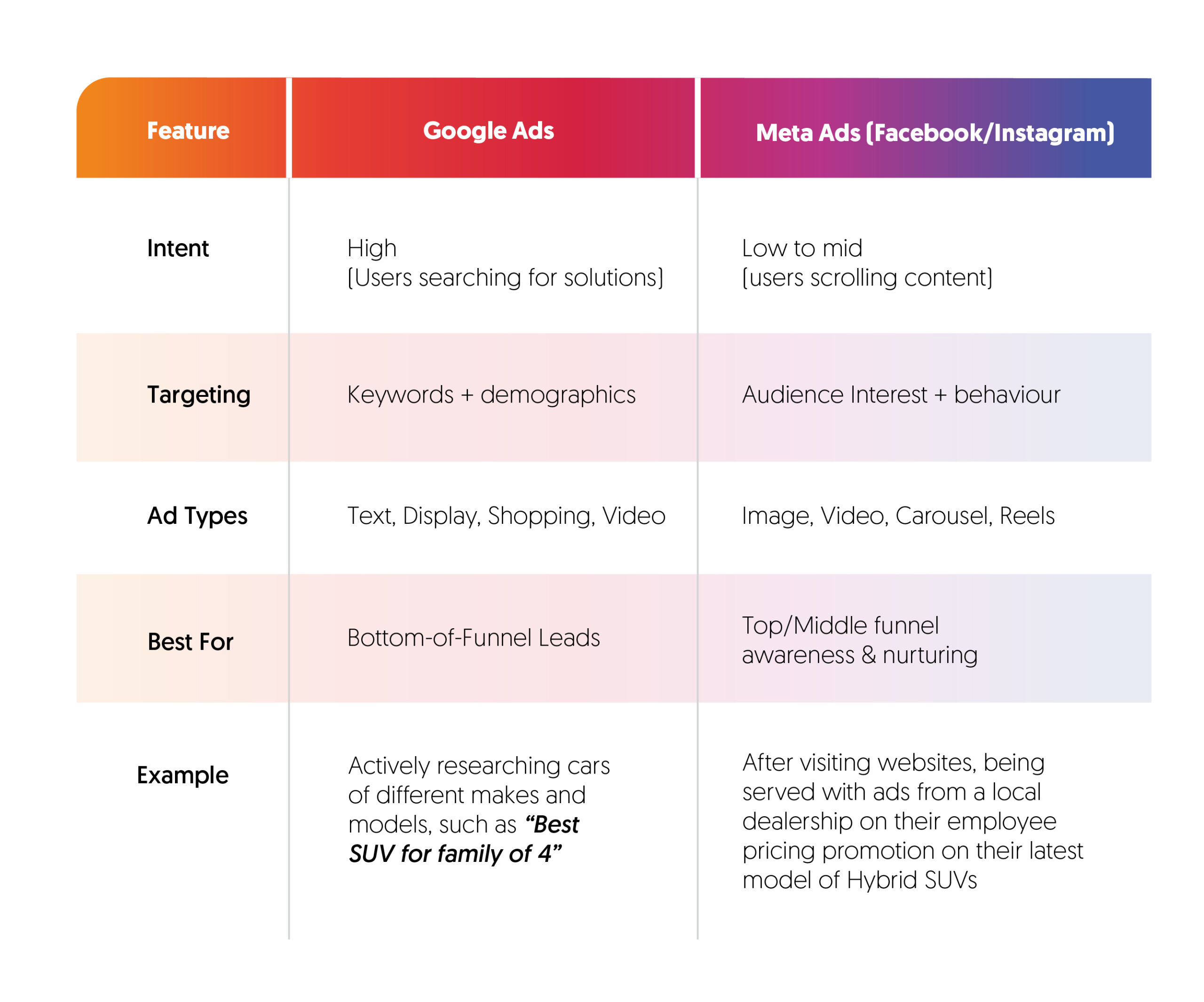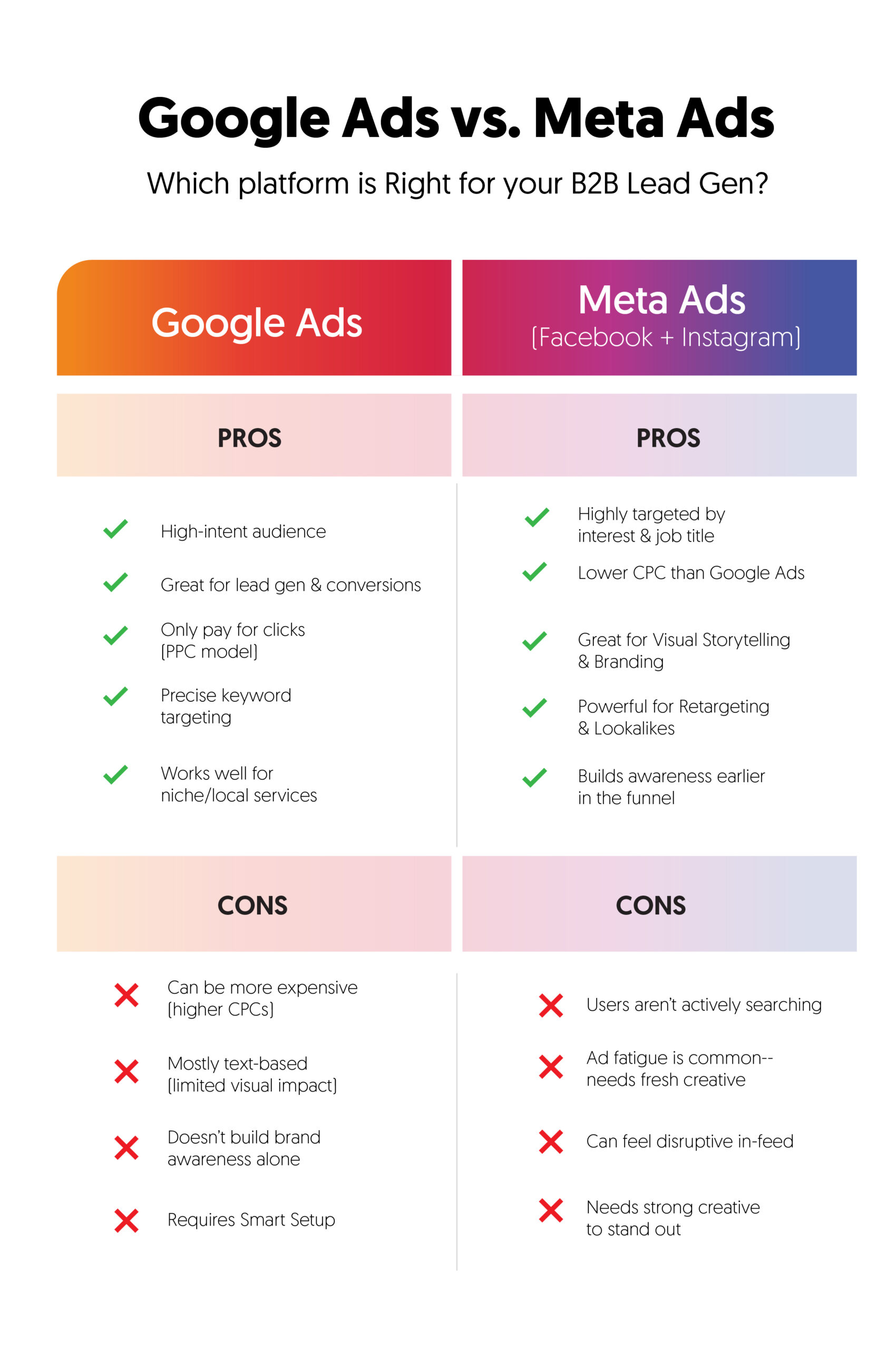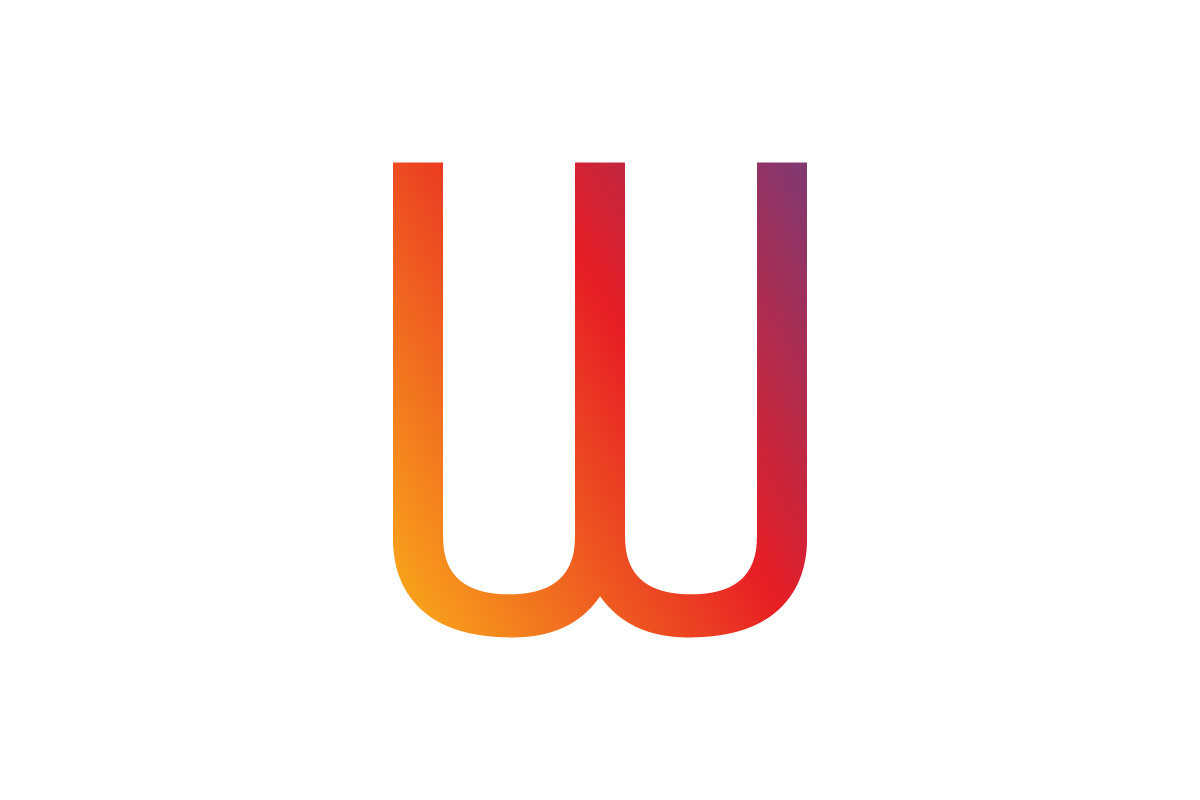B2B Ad Strategy: Google vs. Meta
Digital ads can be your greatest selling tool, if you spend your money right.
The difference? Knowing where to allocate that ad spend. With so many platforms, goals, and ad types to choose from it’s no wonder B2B (business to business) companies end up losing faith in digital ads. This is especially true when they aren’t spending their money based on their service, customer demographics and placement within the sales funnel.
So if you’re stuck wondering whether Google Ads or Meta Ads (a.k.a. Facebook & Instagram) will actually bring in leads, you’re in the right place.
This article breaks down the pros, cons, and best use cases for each so you can stop guessing and start running campaigns that bring you real results.
The Key Differences (at a glance)
Take a look at the table below to get familiar with the features of both platforms:

When to Use Google Ads for B2B
Both Google and Meta can help grow your business, but how and when you use them is key. Think of it like this: If your roof suddenly starts leaking, are you going to scroll Instagram hoping a roofer pops up… or are you heading straight to Google to search “roofers near me”? Exactly. Google Search Ads are all about intent. They’re designed to show your business to people who are actively searching for what you offer. That makes them a top choice for B2B lead generation.
Search Ads = High-Intent Leads:
These text ads show up when someone Googles a phrase like “commercial security systems” or “accountant for small businesses”
They’re great for:
- Generating bottom-of-funnel leads
- Niche services with strong search demand (ie: “hairdressers near me” or “auto repair”
- Getting seen when buyers are ready to act
Why it’s great: You only pay for clicks, and you’re targeting people who are already searching for what you’re providing.
Display Ads
are banners and images that appear on websites, apps, and YouTube. They’re not for instant sales per se, but they do keep your brand top of mind. Based on the way Google targets the data they have, it’s more about the industry, the audience it is in, the websites they are using, and their Google search history. Whereas Meta looks at where you’re from, your age, what you’re interacting with, commenting on, events you’re attending, what your close friends are interested in, etc.
Use them to:
- Stay visible during seasonal selling. If someone is comparing two companies and they start seeing one brand on other websites, it will stay at top of mind.
- If someone is searching for a new vehicle, but still comparing different dealerships, seeing an image ad on the side of the page while reading a news article for a specific promotion at your dealership will stick with them more since it’s on their mind.
- Remind past visitors to come back.
Pro Tip: Add retargeting to reach people who’ve already shown interest.
Video (mainly on YouTube)
is perfect when your offer needs a little explaining, or even just a human representative to give your brand the voice and tone it’s going for.
Use video to:
- Show how your service works
- Share testimonials or behind-the-scenes
- Build trust with new audiences
Perfect for: High-consideration products or services where relationships matter.
When to Use Meta Ads for B2B
Meta ads are different in the way that they appear on your feed based on what you’re interested in and what types of websites you’re surfing. That means Meta is great for awareness, website traffic and brand visibility, even when your audience isn’t actively looking for you yet.
Meta uses data to serve ads to the right people, based on:
- Demographics (age, job title, location)
- Interests and behaviors (pages they follow, content they engage with)
- Custom audiences (like your email list or website visitors)
- Lookalike audiences (people similar to your best customers)
So while someone might not be Googling “Accounting software,” they might be a small business owner scrolling Instagram while eating their lunch, the perfect time to grab their attention.
Pros and Cons of Each Platform
Ok so now you understand which works best and while both sound great, you may still be wondering how a poorly planned ad can hurt your business. Let’s take a look at the pros and cons of each before getting into a decision guide.

So, which one to use?
While at some point in your advertising journey, any of these can help, it’s all about the goal at hand. Ask guiding questions:
- “Do your customers already know they need your service?” Google Ads
- “Do you need to build awareness or educate them first?” Meta Ads
- “Do you have a service/product that requires some planning/research?” Start on Meta, then retarget with Google
The best results usually come from using both platforms together. Use Meta Ads to build awareness and stay top of mind, then let Google Ads capture those high-intent leads when they’re ready to search. With Search Ads, your business will show up higher in the Google results, so if someone visits your site but doesn’t convert, a well-placed retargeting ad on Instagram or Facebook can bring them back. That follow-up might be exactly what sets you apart from your competition.
Smarter Ad Choices = Smarter Growth
When it comes to digital ads, don’t leave it to chance. Think about who your audience is, what they’re looking for, and where they spend their time online. Maybe they’re on Google, actively searching for a solution, or maybe they’re on Meta, casually scrolling with a coffee in hand.
The secret? Match your message to their mindset. That’s where the magic happens.
And while paid ads do the heavy lifting, how you show up organically is just as important. We’ll dive into that in our next article.
At the end of the day, it’s not about choosing Google or Meta. It’s about finding the right balance to reach your audience and hit your goals.
Want help building a strategy that combines both? Let’s chat.
